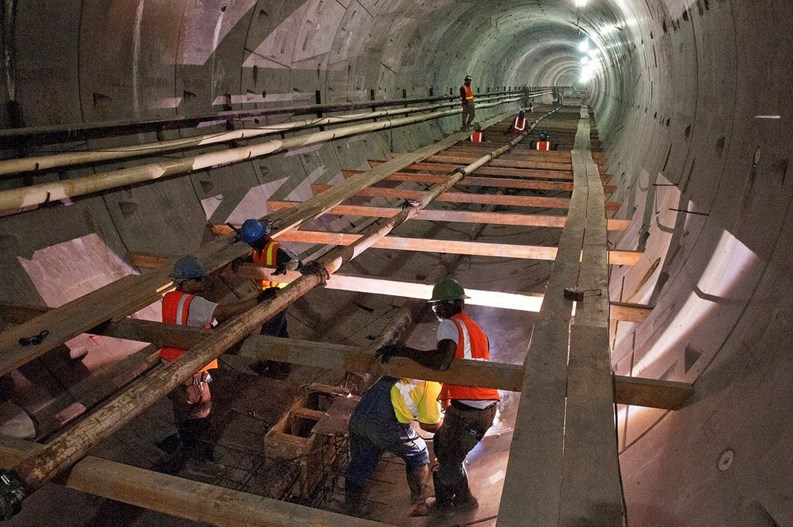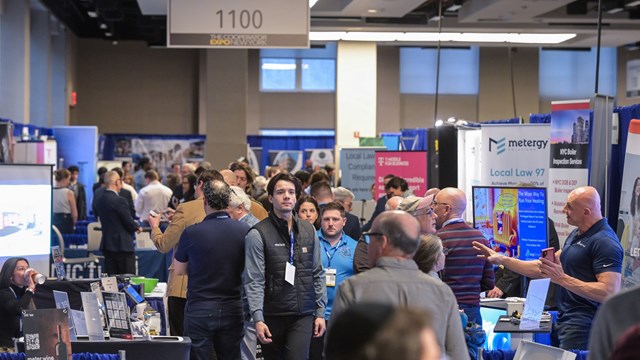When you speak of Hell’s Kitchen and the far west side of Manhattan, the stories that come to mind are of longshoremen, the notorious Westies and dark deserted urban streets, but now, thanks to a the 7 Subway Line extension, a massive project undertaken by the MTA, the docks are about to become a high-end residential neighborhood. With Chelsea, New York City’s hottest neighborhood bordering the south, and the theater district directly east, Hudson Yards is poised to become the newest “en vogue” neighborhood in Manhattan.
The name “Hudson Yards” refers specifically to the MTA rail yards located on the Hudson River, between 30th and 33rd Streets. (The portion between the river and 11th Avenue is known as the Western Rail Yards, and the portion between 10th Avenue and 11th Avenue is known as the Eastern Rail Yards.)
The area is close to the popular High Line park, which was extended to 30th Street in 2011, and Hudson River Park, which offers cycling and jogging lanes, public piers, and a waterside esplanade for public entertainment. Other nearby attractions are Chelsea’s art galleries, the diverse restaurants of Ninth Avenue and Restaurant Row, and the multiplex movie screens and theaters on 42nd Street. Ninth Avenue in the 30s and 40s has a number of supermarkets and specialty food stores.
Penn Station is nearby, as are movie theaters on 42nd Street and the theater district. The Lincoln Tunnel connects 39th Street and Weehawken, New Jersey. While the Hudson Yards area lacks public transportation, the $2.1 billion No. 7 Subway Extension is on schedule for completion in 2014. The No. 7 subway line, which now ends in Times Square, will be extended to a new terminus at West 34th Street and 11th Avenue.
The city administration has started demolition for Hudson Boulevard and has approved designs for three small parks, which will go from 33rd to 36th Streets, between 10th and 11th Avenues.
The Department of City Planning (DCP) passed the Hudson Yards rezoning in 2005 for commercial and residential development from manufacturing. The rezoning starts on West 28th Street and goes up to West 43rd Street, from 8th Avenue to 11th Avenue. Certain portions of this area are 100 percent residential zoning and other portions are mixed.
A Little History
The area encompassing Hudson Yards was historically not very residential. In its earlier incarnations, it was a gritty neighborhood of freight yards, factories, garages, warehouses, stock pens and tenements. Hell’s Kitchen was considered one of the most dangerous neighborhoods in New York City after the Civil War. Its name came from the Hell’s Kitchen Gang, organized in about 1868 by Dutch Heinrichs. This gang specialized in raids on the 30th Street Hudson River Railroad yard.
It was a low-rise, working-class, immigrant area dominated by tenements. Industrial construction adjacent to the Hudson River waterfront in the late 19th and early 20th centuries spurred further inland housing development. The location of major transportation infrastructure at the beginning of the 20th century invited industry that sought cheap rents and accessibility. Beginning in 1919, garment loft buildings replaced three- and four-story residential and factory buildings as well as school and church properties.
Condos & Much More...
Since the rezoning, numerous hotels have been built in this area and several large residential developments, including Glenwood Management's Emerald Green, a 569-unit luxury rental building on West 38th Street between Eighth and Ninth avenues. Developer TF Cornerstone is also offering luxury rentals at its 455 West 37th and 505 West 37th buildings.
On either side of Tenth Avenue between 37th and 38th Streets, Rockrose Development has opened two luxury rental high-rises with 388 units and 855 units, respectively. Like most of the new rental developments, the Rockrose buildings are 80/20 properties, with 20 percent of the units reserved for low- and middle-income residents.
In addition to the residential work, the first new office building in the area has been announced by the Related Companies. Plans are in the works for a 1.3 million-square-foot tower to rise at the corner of 10th Avenue and 30th Street and be the new headquarters for Coach Inc. Construction of the tower is expected to begin this year and be completed by 2015.
The Related Companies plan at Hudson Yards will also include 1 million square feet of retail on five levels, a five-star hotel, 5,000 residential units, a cultural center, 14 acres of public space and parks, and a 750-seat public school. A movie theater complex and a food market are also on the table, and the company has secured a $200 million construction loan for a 30-story apartment house on a lot on West 30th Street and 10th Avenue it is developing with partner Abington Properties. The property will be constructed under New York State’s 80/20 program.
Taking advantage of the different zoning just a few blocks downtown, development firm Avalon Bay is set to begin construction on a large residential complex, with a 30-story, 700-unit rental tower at 11th Avenue and 29th Street, one block south of Hudson Yards. Other notable residential developments in this burgeoning neighborhood include The Ohm, a 34-story rental building at 30th Street and 11th Avenue.
Just uptown from the Hudson Yards area, skyscraper condos and rental buildings face off on the west end of 42nd Street. The 63-story MiMA (short for Middle of Manhattan), a mixed rental and condo building built by Related, is between 10th and Dyer avenues. MiMA's amenity package includes a private Equinox sports club, an outdoor movie theater and a dog run.
The Gotham Organization recently broke ground on a $520 million residential complex on the block bounded by 44th and 45th streets, between 10th and 11th Avenues. It will contain a whopping 1,232 apartment units, including 682 units for moderate- and middle-income families, as mandated by the Hudson Yards rezoning. There will also be a 670-seat school, stores and private gardens.
Progress, or Pushback?
Despite efforts to accommodate a range of economic realities in the course of planning new residential development, some longtime residents of the Midtown West area have expressed concern that the scale of some of the development plans currently being negotiated is overwhelming.
Currently, the neighborhood's 21,000 residents make their homes in a variety of housing stock, including walk-up apartments and tenements on the side-streets, converted lofts and high-rise apartment buildings.
Community District 4, which stretches from 14th Street to 59th Street, west of Eighth Avenue and includes Chelsea and Hell’s Kitchen, is a vibrant, mixed-income community. Members of CB4 are concerned the property developments will significantly alter the overall demographics and character of the community district and introduce a significant component of more costly housing.
“To develop successfully, the Rail Yards must be a place where people will want to live, work and visit,” wrote Anna Hayes Levin, former chair of the Hudson Yards Community Advisory Committee, in a letter to Community Board 4. “That is unlikely to happen in a dystopian environment dominated by monumental and intimidating buildings, no matter how much open space there is or how carefully it is designed.”
CB4 is also concerned about the balance between development and neighborhood preservation. While affordable units are part of the mix of many new buildings, the board has advocated strongly for affordable family-sized apartments of two bedrooms or larger, and for those units to be evenly distributed throughout the building— not segregated and sequestered in one quadrant of the development.
“The problem is the developers are building more studios and one-bedrooms, so you have 20 percent of one-bedrooms and studios for affordable and very few two-bedroom units,” says Joe Restuccia, co-chair of CB4's Housing Committee.
Restuccia adds that the area's new affordable housing should stay that way. “With 80/20 financing on its own, the low-income units are not permanently affordable,” he says. “When 80/20 is joined with the city’s Inclusionary Housing Bonus Program, the unit remains permanently affordable.”
CB4 is working hard to get affordable housing in the Hudson Yards, says Gale Brewer, city councilwoman for Manhattan’s Sixth District. “With the 80/20 alone, the owner gets abatement for providing 20 percent affordable housing,” Brewer says. “If the original tenant continues to live in the apartment it becomes stabilized, but if the original tenant moves or dies, the apartment goes to the open market.”
The community board would also like to see a good public school and affordable cultural institutions in this area. “The model that people like is Battery Park City, where people can walk to work, and the area has dry cleaners, restaurants, grocery stores and good schools. It’s like a small town. This could be a model for Hudson Yards,” Brewer says.
Other Concerns
Community Board 4 is concerned also that the nonprofit businesses that have existed in the area remain in the area, and that the commercial white-collar jobs that will be attracted by the kind of new development will differ significantly from those presently available in the community, thus undermining the racial and economic diversity of the neighborhood.
“On the West Side, we are the place where theater really happens, frequently in loft buildings,” Restuccia says. “As the area has been rezoned, these small theaters are losing their leases. We are trying to get the developers to include affordable space for these small non-profit theater groups. It has been very difficult. They don’t want to make the concession.”
No matter what the future brings for Midtown West, developers, long-time residents, and newcomers alike, will keep struggling to have their voices heard, their priorities addressed, and their neighborhood enriched.
Peter Malbin is a freelance writer and a frequent contributor to The Cooperator.







Comments
Leave a Comment